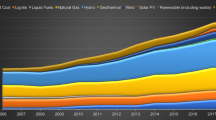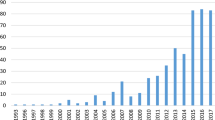Abstract
Decision-making problems in both the public and private sectors are involving an increasingly wide range of criteria which are also often in conflict with one another. This is particularly true for the case of decisions involving sustainability, which typically require standard financial or operational criteria, such as cost or production targets, to be balanced with other criteria that have social, ethical and environmental aspects in the decision-making model. In this paper, we consider a sustainable energy investment prioritization problem for a private entity with a diverse set of decision-making priorities, and use a multi-attribute utility theory (MAUT)-based approach to develop a ranking of the alternatives. As part of our case study, we focus on four issues that were the primary hurdles to implementation: (1) establishment of a goals hierarchy that captured a wide range of sustainability objectives in a structure that made sense for the decision makers, (2) use of probabilistic ordinal data for qualitative attributes, (3) specification of preference functions for qualitative attributes, and (4) determination of the applicability of the various methods of assessing the relative importance of the different qualitative and quantitative sustainability criteria. In turn, we discuss the resolution of each of these issues, along with sensitivity analyses that demonstrate that the resulting ranking of decision alternatives was reasonably robust. We conclude by discussing the implications of this study for the application of MAUT to other problems of this type.









Similar content being viewed by others

Notes
More information about the Pepperdine University Center for Sustainability, including its history, mission and current activities, can be found at: http://www.pepperdine.edu/sustainability/.
References
Buchholz T, Rametsteiner E, Volk T, Luzadis V (2009) Multi criteria analysis for bioenergy systems assessments. Energy Policy 37:484–495
Burton J, Hubacek K (2007) Is small beautiful? A multicriteria assessment of small-scale energy technology applications in local governments. Energy Policy 35:6402–6412
Chatzimouratidis A, Pilavachi P (2009a) Technological, economic and sustainability evaluation of power plants using the analytic hierarchy process. Energy Policy 37:778–787
Chatzimouratidis A, Pilavachi P (2009b) Sensitivity analysis of technological, economic and sustainability evaluation of power plants using the analytic hierarchy process. Energy Policy 37:788–798
Cherni J, Dyner I, Henao F, Jaramillo P, Smith R, Font R (2007) Energy supply for sustainable rural livelihoods. A multi-criteria decision-support system. Energy Policy 35:1493–1504
Dinh L, Guo Y, Mannan M (2009) Sustainability evaluation of biodiesel production using multicriteria decision-making. Environ Progr Sustain Energy 28(1):38–46
Dorini G, Kapelan Z, Azapagic A (2011) Managing uncertainty in multiple-criteria decision making related to sustainability assessment. Clean Technol Environ Policy 13:133–139
Elghali L, Clift R, Sinclair P, Panoutsou C, Bauen A (2007) Developing a sustainability framework for the assessment of bioenergy systems. Energy Policy 35:6075–6083
Figge F, Hahn T, Schaltegger S, Wagner M (2002) The sustainability balanced scorecard-linking sustainability management to business strategy. Bus Strateg Environ 11:269–284
Fishburn P (1965) Independence in utility theory with whole product sets. Oper Res 13:28–43
Georgopoulou E, Lalas D, Papagiannakis L (1997) A multicriteria decision aid approach for energy planning problems: the case of renewable energy option. Eur J Oper Res 103(1):38–54
Goletsis Y, Psarras J, Samouilidis J (2003) Project ranking in the Armenian energy sector using a multicriteria method for groups. Ann Oper Res 120:135–157
Goumas M, Lygerou V (2000) An extension of the PROMETHEE method for decision making in fuzzy environment: ranking of alternative energy exploitation projects. Eur J Oper Res 123:606–613
Greening L, Bernow S (2004) Design of coordinated energy and environmental policies: use of multi-criteria decision-making. Energy Policy 32:721–735
Hämäläinen R, Alaja S (2008) The threat of weighting biases in environmental decision analysis. Ecol Econ 68:556–569
Hammond J, Keeney R, Raiffa H (1998) Even swaps: a rational method for making tradeoffs. Harv Bus Rev 76:137–149
Higgs G, Berry R, Kidner D, Langford M (2008) Using IT approaches to promote public participation in renewable energy planning: prospects and challenges. Land Use Policy 25:596–607
Huang I, Keisler J, Linkov I (2011) Multi-criteria decision analysis is environmental sciences: ten years of applications and trends. Sci Total Environ 409:3578–3594
Kablan M (2004) Decision support for energy conservation promotion: an analytic hierarchy process approach. Energy Policy 32:1151–1158
Kaplan R, Norton D (1997) Balanced scorecard: translating strategy into action. Harvard Business Publishing, Boston
Keeney R (1987) An analysis of the portfolio of sites to characterize for selecting a nuclear repository. Risk Anal 7(2):195–218
Keeney R (1992) Value-focused thinking: a path to creative decision making. Harvard University Press, Cambridge
Keeney R (1994) Creativity in decision making with value-focused thinking. Sloan Manag Rev 35(4):33–41
Keeney R (2002) Common mistakes in making value trade-offs. Oper Res 50(6):935–945
Keeney R, Gregory R (2005) Selecting attributes to measure the achievement of objectives. Oper Res 53(1):1–11
Keeney R, McDaniels T (1999) Identifying and structuring values to guide integrated resource planning at BC gas. Oper Res 47(5):651–662
Keeney R, Nair K (1977) Nuclear siting using decision analysis. Energy Policy 5(3):223–231
Keeney R, Raiffa H (1976) Decisions with multiple objectives: preferences and value tradeoffs. Wiley, New York
Keeney R, Sicherman A (1983) Illustrative comparison of one utility’s coal and nuclear choices. Oper Res 31(1):50–83
Keeney R, Wood E (1977) An illustrative example of the use of multiattribute utility theory for water resources planning. Water Resour Res 13(4):705–712
Keeney R, Renne O, von Winterfeldt D (1987) Structuring West Germany’s energy objectives. Energy Policy 15(3):352–362
Kiker G, Bridges T, Varghese A, Seager T, Linkov I (2005) Application of multicriteria decision analysis is environmental decision making. Integr Environ Assess Manag 1(2):95–108
Köne A, Büke T (2007) An analytical network process (ANP) evaluation of alternative fuels for electricity generation in Turkey. Energy Policy 35:5220–5228
Lahdelma R, Salminen P, Hokkanen J (2000) Using multicriteria methods in environmental planning and management. Environ Manag 26(6):595–605
Liang Z, Yang K, Sun Y, Yuan J, Zhang H, Zhang Z (2006) Decision support for choice optimal power generation projects: fuzzy comprehensive evaluation model based on the electricity market. Energy Policy 34:3359–3364
Linares P, Romero C (2000) A multiple criteria decision making approach for electricity planning in Spain: economic versus environmental objectives. J Oper Res Soc 51:736–743
Løken E, Botterud A, Holen A (2009) Use of the equivalent attribute technique in multicriteria planning of local energy systems. Eur J Oper Res 197:1075–1083
Madlener R, Kowalski K, Stagl S (2007) New ways for the integrated appraisal of national energy scenarios: the case of renewable energy use in Austria. Energy Policy 35:6060–6074
Mavrotas G, Diakoulaki D, Capros P (2003) Combined MCDA–IP approach for project selection in the electricity market. Ann Oper Res 120:159–170
Miettinen P, Hämäläinen R (1997) How to benefit from decision analysis in environmental life cycle assessment (LCA). Eur J Oper Res 102(2):279–294
Moshkovich H, Mechitov A, Olson D (2002) Ordinal judgments in multiattribute decision analysis. Eur J Oper Res 137(3):625–641
Mustajoki J, Hämäläinen R (2005) A preference programming approach to make the even swaps method even easier. Decis Anal 2(2):110–123
Neves L, Martins A, Antunes C, Dias L (2008) A multi-criteria decision approach to sorting actions for promoting energy efficiency. Energy Policy 36:2351–2363
Pilavachi P, Chatzipanagi A, Spyropoulou A (2009) Evaluation of hydrogen production methods using the analytic hierarchy process. Int J Hydrog Energy 34:5294–5303
Rauschmayer F (2001) Reflections on ethics and MCA in environmental decisions. J Multi Criteria Decis Anal 10:65–74
Ren H, Gao W, Zhou W, Nakagami K (2009) Multi-criteria evaluation for the optimal adoption of distributed residential energy systems in Japan. Energy Policy 37:5484–5493
Supriyasilp T, Pongput K, Boonyasirikul T (2009) Hydropower development priority using MCDM method. Energy Policy 37:1866–1875
Terrados J, Almonacid G, Aguilera J (2010) Energy planning: a sustainable approach. In: Nathwani J, Ng A (eds) Paths to sustainable energy. InTech, New York, pp 57–74
Theodorou S, Florides G, Tassou S (2010) The use of multiple criteria decision making methodologies for the promotion of RES through funding schemes in Cyprus, a review. Energy Policy 38:7783–7792
Tsoutsos T, Drandaki M, Frantzeskaki N, Iosifidis E, Kiossis I (2009) Sustainable energy planning by using multi-criteria analysis application in the island of Crete. Energy Policy 37:1587–1600
Tzeng G, Lin C, Opricovic S (2005) Multi-criteria analysis of alternative-fuel buses for public transportation. Energy Policy 33:1373–1383
Von Winterfeldt D, Edwards W (1986) Decision analysis and behavioral research. Cambridge University Press, New York
Wallenius J, Dyer J, Fishburn P, Steuer R, Zionts S, Deb K (2008) Multiple criteria decision making, multiattribute utility theory: recent accomplishments and what lies ahead. Manag Sci 54(7):1336–1349
Wang J, Jing Y, Zhang C, Shi G, Zhang X (2008) A fuzzy multi-criteria decision-making model for trigeneration system. Energy Policy 36:3823–3832
Wu Z, Pagell M (2011) Balancing priorities: decision-making in sustainable supply chain management. J Oper Manag 29:577–590
Zangeneh A, Jadid S, Rahimi-Kian A (2009) A hierarchical decision making model for the prioritization of distributed generation technologies: a case study for Iran. Energy Policy 37:5752–5763
Author information
Authors and Affiliations
Corresponding author
Rights and permissions
About this article
Cite this article
Hahn, W.J. Making decisions with multiple criteria: a case in energy sustainability planning. EURO J Decis Process 3, 161–185 (2015). https://doi.org/10.1007/s40070-014-0025-x
Received:
Accepted:
Published:
Issue Date:
DOI: https://doi.org/10.1007/s40070-014-0025-x



